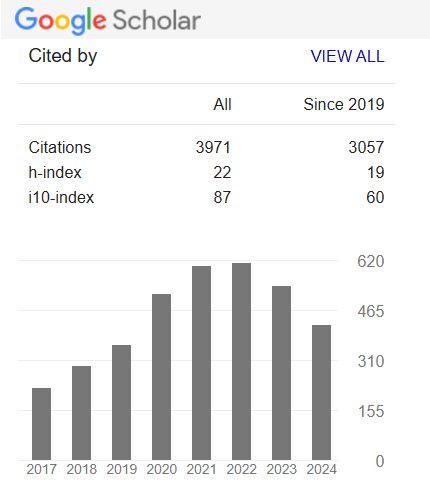A Development and Evaluation of a Multipurpose Fruit Pulping Machine
Keywords:
Extraction efficiency, extraction loss, fruit, juice yield, pulping machineAbstract
A multipurpose fruit pulping machine was designed, constructed and evaluated for performance using oranges, watermelon, pineapple, and tangerine. The machine was fabricated using locally available construction materials. The essential components of the machine include a feeding hopper, top cover, worm shaft, juice sieve, juice collector, waste outlet, transmission belt, main frame, pulleys and bearings. In operation, the worm shaft conveys, crushes, presses and squeezes the fruit to extract the juice. The juice extracted is filtered through the juice sieve into the juice collector while the residual waste is discharged through the waste outlet. The design analysis of the components provided the data that were used in the sizing, fabrication and assembling of the machine. Performance tests were carried out using oranges, watermelon, pineapple, and tangerine that were introduced into the machine. The performance indicators considered were percentage juice yield, extraction efficiency and extraction loss. Results showed that pineapple was leading in juice extraction efficiency (91.2%, followed by watermelon (90.5%). Further, it was found that watermelon was leading in juice yield (85.1%) and the last was tangerine (69.1%). The results also demonstrated that watermelon (2.9%) was observed to have the highest juice extraction loss, and the orange (2.3%) was the least. Powered by a 3Hp single-phase electric motor, the machine has a capacity of 1.24M3/h. The machine is simple to operate and maintain, therefore it is recommended for smallholder and local fruit juice processors.
Downloads
References
Aremu AK and Ogunlade CA (2016) Development and evaluation of a multipurpose juice extractor. New York Science Journal, 9(6), 7–14.
Aviara NA, Lawa A, Nyam DS and Bamisaye J (2013) Development and performance evaluation of a multi-fruit juice extractor. Global Journal of Engineering, Design and Technology, 2(2), 16–21.
Caswell H (2009) The role of fruit juice in the diet: An overview. Nutrition Bulletin, 34(3), 273–288.
Dikson M (2015) Wild fruit pulping machine. International Conference on Mechanical and Industrial Engineering (ICMIE’15), Harare, Zimbabwe.
Dube S, Paremoer T, Jahari C and Kilama B (2018) Growth and development of the fruit value chain in Tanzania and South Africa.
Ekka R, and Mjawa B (2020) Case Study: Growth of Tanzania’s Horticulture Sector: Role of TAHA in Reducing Food Loss. International Food Loss and Waste Hotspots and Business Models Project September.
Ishiwu C and Oluka S (2004) Development and performance evaluation of a juice extractor. 26, 391–395.
Issa IM, Munishi EJ and Mubarack K (2021) Post-Harvest Losses for Urban Fresh Fruits and Vegetables Along the Continuum of Supply Chain Functions: Evidence From Dar es Salaam City-Tanzania.
Mushtaq M (2018) Extraction of fruit juice: An overview. Fruit Juices, 131–159.
Oyeleke F and Olaniyan A (2007) Extraction of juice from some tropical fruits using a small scale multi-fruit juice extractor.
Priyadarshini A and Priyadarshini A (2018) Market dimensions of the fruit juice industry. In Fruit juices (pp. 15–32). Elsevier.
Rajauria G and Tiwari BK (2018) Fruit juices: An overview. Fruit Juices, 3–13.
Rodriguez-Rafael A, Revollar-Richle K, Granados-Ames A, and William, ZPF (2024). Granadilla Pulper Specialised: Innovative Blade System and Gravity Separation for Peruvian Producers. 246–250.
Thompson AK (2008) Fruit and vegetables: Harvesting, handling and storage. John Wiley & Sons.
Thompson AK, Prange RK, Bancroft R, and Puttongsiri, T (2018) Controlled atmosphere storage of fruit and vegetables. CABI.
Tressler D, and Joslyn M (1961) Fruit and vegetable juice technology. AVI Publ Co Inc., West Port, Connecticut, 155–158.
Van der Maden E, Ringo E, and Likoko E (2021) Scoping study on fruits and vegetables: Results from Tanzania (Issues 2021–111). Wageningen Economic Research.
Downloads
Published
How to Cite
Issue
Section
License
Copyright (c) 2025 Nelson Makange, Honest Lyaruu, Yuda Benjamin

This work is licensed under a Creative Commons Attribution-NonCommercial-NoDerivatives 4.0 International License.
Open Access This article is licensed under a Creative Commons Attribution 4.0 International License, which permits use, sharing, adaptation, distribution and reproduction in any medium or format, as long as you give appropriate credit to the original author(s) and the source, provide a link to the Creative Commons license, and indicate if changes were made. The images or other third party material in this article are included in the article’s Creative Commons license unless indicated otherwise in a credit line to the material. If the material is not included in the article’s Creative Commons license and your intended use is not permitted by statutory regulation or exceeds the permitted use, you will need to obtain permission directly from the copyright holder. To view a copy of this license, visit http://creativecommons.org/ licenses/by/4.0/










